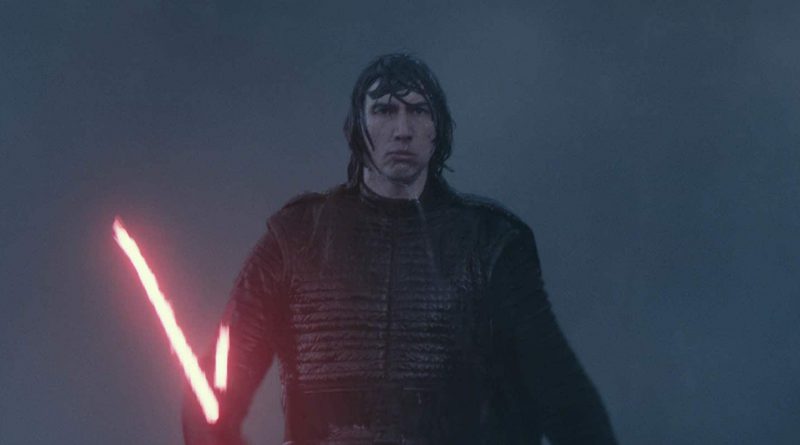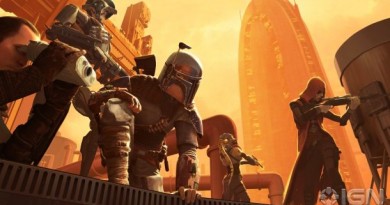The Fates of Kylo Ren and Ben Solo: The Failures of The Rise of Skywalker, Part 3
Fifteen years ago, in the months leading up to the release of Revenge of the Sith, the previous five films and two decades of paratext had revealed to fans many of the key plot points necessitated by Episode III’s place in the Star Wars saga: Anakin would fall to the dark side and become Darth Vader, Obi-Wan Kenobi would duel his fallen apprentice amid lava, the twins Luke and Leia would be born and hidden with adoptive families, and so on. In speculation and fanfiction, fans theorized numerous ways these events might transpire.
When the movie arrived, fans learned that George Lucas had subverted many of those expectations in service of a crucial thematic point: Anakin Skywalker and Darth Vader are not two characters, but the same man. The iconic black armored suit did not arrive until the very end of the film. Instead, it was Hayden Christensen’s face that knelt to accept the title Darth Vader, carried out Order 66 and slaughtered younglings, betrayed Padmé and the Republic and everything she stood for, and fought Kenobi at Mustafar – with a blue blade, not a red one. The “certain point of view” explanation from Return of the Jedi was complete. As much as Kenobi or the Emperor, or even the masked man himself, might have viewed Darth Vader as a separate person, that was never true. Anakin Skywalker was Darth Vader and Darth Vader was Anakin Skywalker. And, equally important for both Revenge of the Sith and Return of the Jedi, Anakin could no more erase his crimes and atrocities as a Sith than Vader could annihilate his past heroism as a Jedi.
George Lucas famously said of his second trilogy building on the first, “It’s like poetry. They rhyme.” In The Force Awakens and The Last Jedi, fans learned that Kylo Ren, the new identity of Ben Solo, revered the dark side of his grandfather, Darth Vader, and had turned his back on the heroic legacy of his parents Leia Organa and Han Solo, his uncle Luke Skywalker, and his grandparents Anakin Skywalker and Padmé Amidala. As The Rise of Skywalker approached, fans waited to see whether his fate would be a rhyme – or a copy-paste.
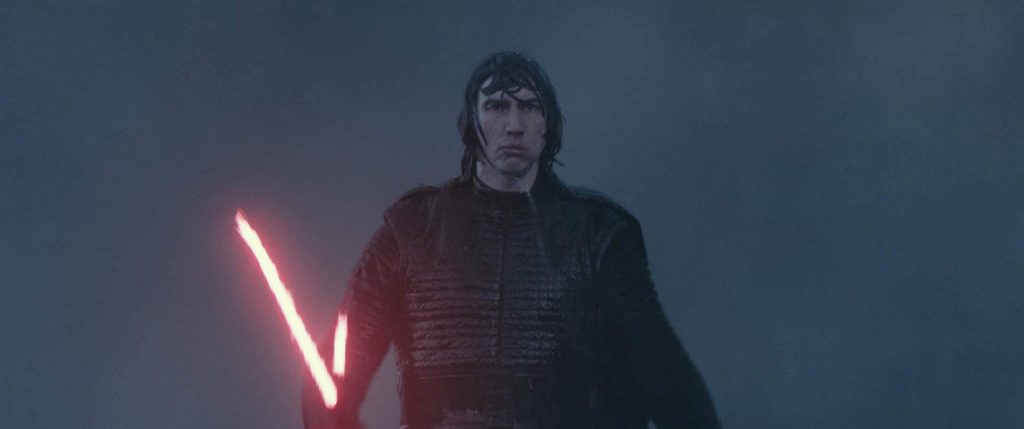
The Unfulfilled Villain’s Journey of Kylo Ren
The story of Kylo Ren originated as a rhyme. Adam Driver, who portrayed the character in all three films, had long hinted that he had known the basic character arc for Kylo Ren from the very beginning, when J.J. Abrams recruited him for the role while casting The Force Awakens. No doubt in the interest of avoiding even inadvertently providing information that might be construed as an implication of a spoiler, Driver had spent four years studiously declining to give any indication of what he had been told. During the press tour on the eve of The Rise of Skywalker’s theatrical release, Driver finally shared what Abrams had pitched to him.
“The thing that J.J. said to me when we first met – first meeting, the first time – was that I imagine a journey of a character where it’s almost the opposite – just isolating the Original Trilogy – the opposite of Vader. Vader starts the most confident, the most experienced, and over the course of three films is chipped away until he’s his most vulnerable. And [J.J.] had the idea of starting someone at that place and doing almost the exact opposite. (At the start of the third movie; I didn’t know at that point how the third movie ended.) Someone who starts the most vulnerable, and the most susceptible, and gradually becomes more and more hardened with the experience he’s had – gets deeper and deeper into the dark side.” (via YouTube)
Driver’s revelation confirms that protagonist and antagonist of the Sequel Trilogy were conceived as having perpendicular character arcs: Rey rising on a Hero’s Journey, Kylo Ren falling on a Villain’s Journey, intersecting in the middle but divergent at both the beginning and the ending. (Long prior to The Rise of Skywalker, we analyzed those character arcs in that way in our previous posts discussing Rey’s Hero’s Journey in The Force Awakensand The Last Jedi and Kylo Ren’s Villain’s Journey in the first two films.) Driver’s interjected aside, distinguishing the ending of the third movie from its start, is ambiguous as to whether Driver never knew the third movie’s intended ending or whether an originally intended ending was changed. But his explanation of the trilogy-spanning character arc is clear: rather than Kylo Ren proceeding on a gradual path from dark to light toward redemption, Abrams and Driver designed the character to be growing increasingly dark – more evil – over the course of three movies.
Two-and-a-half movies in the Sequel Trilogy followed this vision of the character. In The Force Awakens, Kylo Ren is unsettled, given to temper tantrums, rash impulses, and overconfidence. Facing Han Solo on the Starkiller Base catwalk, he feels “torn apart” by the need to murder his father as a test that will solidify his commitment to the dark side. Mere days later at the opening of The Last Jedi, his raw emotions lead him to hesitate to fire upon his mother aboard the Raddus.
By the time Rey arrives at the Supremacy hoping to bring him back to the light, however, Kylo has decided what he actually intends to accomplish with his second test: the assassination of Snoke and claiming the title of Supreme Leader for himself. When Rey begs him to save the Resistance transports and stand down the First Order, he instead decrees that she must kill the past (and her friends) and join him on the dark side. At Crait, Kylo’s commands follow through on his choice. He orders: the destruction of the Millennium Falcon with Rey and Chewbacca aboard; the massacre of everyone, including his mother, inside the Resistance base; and the annihilation of Luke Skywalker by cannon fire. When the latter fails, he tries to kill Luke personally, pledging to destroy not only the Resistance but also the Jedi, referring to Luke and then to Rey.
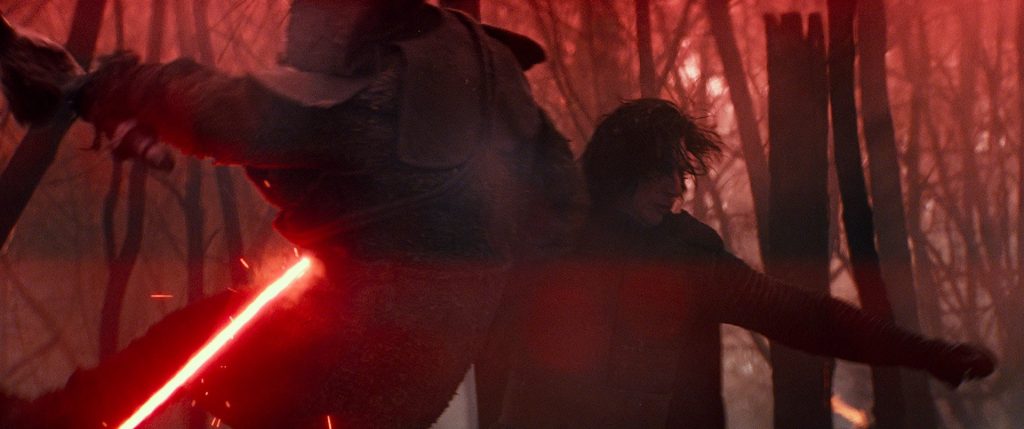
A year later in The Rise of Skywalker, Supreme Leader Kylo Ren is even more committed to his villainous path. He has no qualms about combining the First Order’s forces with the newly discovered Sith fleet to enable him to conquer the entire galaxy. He pledges to crush any worlds that stand in his way. He raises no objection to the suggestion that additional children must be stolen from the galaxy as conscripts. He leads the Knights of Ren in the hunt for Rey, knowing that the last Jedi is the biggest danger to his plans. Although he would prefer to turn her to the dark side, he warns her that he is willing to kill her if she refuses to yield. From the opening crawl and his massacre on Mustafar to his lightsaber blows pounding Rey to her knees atop the watery wreckage on Kef Bir, The Rise of Skywalker portrays Kylo Ren at the pinnacle of his villain’s journey. To the extent Palpatine looms as another Big Bad in the story, Kylo Ren does not intend to defeat him, but to supersede him.
At that point, The Rise of Skywalker abruptly alters Kylo Ren’s path. He has no journey from dark to light, no progression of conflict or regret. Instead, he simply flips a switch and becomes Ben Solo again. The reason why this sudden transformation fails the story is discussed in detail below.
With the information currently known about the production of The Rise of Skywalker, it is not possible to determine whether the storytellers always had in mind a three-movie Villain’s Journey that ended with an abrupt return to the light, or whether that ending might have been a later development in the process. Evaluating Driver’s revelation in combination with The Force Awakens, The Last Jedi, and the first half of The Rise of Skywalker certainly leaves room, however, for a story in which Kylo Ren served as the Big Bad of the final movie in the trilogy.
After all, the vast majority of dark side Force-wielding villains in Star Wars canon are not redeemed, but rather meet their fates while still evil. George Lucas redeemed only two characters: Darth Vader in Return of the Jedi and Asajj Ventress in The Clone Wars (as told in the novel Dark Disciple). Lucas struck down Darth Maul in The Phantom Menace, Count Dooku in Revenge of the Sith, the Emperor in Return of the Jedi, and Mother Talzin in The Clone Wars (as shown in the comic Son of Dathomir). Dave Filoni completed Maul’s story with his death at the hands of Obi-Wan Kenobi in Star Wars Rebels; that series also included the deaths of the Grand Inquisitor, Seventh Sister, and Fifth Brother. The recently released videogame Jedi Fallen Order similarly kills off the Tenth Sister and Second Sister, as well as Malicos, a fallen Jedi consumed by hatred. When it comes to characters without strength in the Force, for every Agent Kallus or Hondo Ohnaka the stories include far more unredeemed villains, such as Grand Moff Tarkin, Jabba the Hutt, Jango Fett, General Grievous, Director Krennic, Dryden Vos, Tobias Beckett, Pre Viszla, and Governor Pryce. And of course, The Rise of Skywalker includes the death of Palpatine at Rey’s hand, as well as unredeemed deaths for Generals Pryde and Hux of the First Order. Plenty of precedent would have supported the death of an evil Supreme Leader Kylo Ren as the Big Bad, his defeat by Rey signifying the victory of the Jedi over another imbalance in the Force.
At Star Wars Celebration Chicago in April 2019, and in comments since, J.J. Abrams and Kathleen Kennedy talked about the desire for The Rise of Skywalker to tell a “timely” story for today’s audience. While watching a bad person turn their back on their dark past and choose to be good can be an affirming message, our contemporary society and world all too often presents another scenario instead: what is to be done with someone evil who does not want to be good? Especially if that someone is a white man of privilege who chooses to use his power to harm others instead of help them, the answer could not have been more timely.

The Unearned Return of Ben Solo
Rather than attaining his place as a peak Star Wars villain, The Rise of Skywalker instead provides Kylo Ren with a denouement that matches Rey’s expression of his greatest fear: that he will never live up to the legacy of Darth Vader. Like grandfather like grandson, Kylo makes a last-minute rejection of the dark side and a final act of self-sacrifice to save the life of the next generation’s Jedi hero.
Unlike Darth Vader in Return of the Jedi, however, Kylo Ren’s turn to the light in The Rise of Skywalker is not earned within the film. As a space opera weaving modern mythology, Star Wars gets a pass to take liberties with all manner of suspension of disbelief, and a dark sider’s sudden epiphany and repudiation of evil – Vader is gone and Anakin has returned, Kylo Ren is dead and Ben Solo is alive – may fall into the category for many people. Yet accepting that Star Wars sometimes handwaves realism is not the same thing as allowing the story to handwave characterization. That is where Kylo Ren most greatly fails to match Darth Vader.
In Return of the Jedi, Vader’s transformation is built for over an hour in the film. Luke tells Leia that he can sense good in Vader and knows he can reach it. With Luke arrived on the moon, the Emperor questions whether Vader’s feelings are clear. Meeting face to face on a wooden bridge, Luke expresses his confidence directly to Vader, acknowledging Anakin Skywalker as his father and the reality that Vader is the same man. Though Vader rejects the assertion – “That name no longer has any meaning for me” – his tone is not fury or disgust but regret and sadness – “It is too late for me, son.” Gone is the proposal to kill the Emperor and rule together on the dark side of the Force. The scene ends with Luke taken away and Vader staring out over the forest, a visual parallel to the young man in Revenge of the Sith overlooking the lava fields of Mustafar after slaying the Separatist leadership, a tear running down his face as he recognizes the reality of the Sith Lord he has become.
In the Emperor’s throne room on the second Death Star, Vader stands silent while Palpatine attempts to instigate Luke into unleashing his hatred. In the presence of his Sith master, Vader rebuffs Luke’s assertion of conflict within him and pledges to turn Luke – or Leia – to the dark side. Beaten down by Luke’s onslaught and deprived (again) of his hand, Vader watches as Luke throws aside his weapon, denounces Palpatine, and declares “I am a Jedi, like my father before me.” He continues watching as the Emperor electrocutes Luke toward death, including his son’s beseeching cry, “Father! Please!” After all this has been portrayed onscreen, Vader makes his final choice to be Anakin once more.
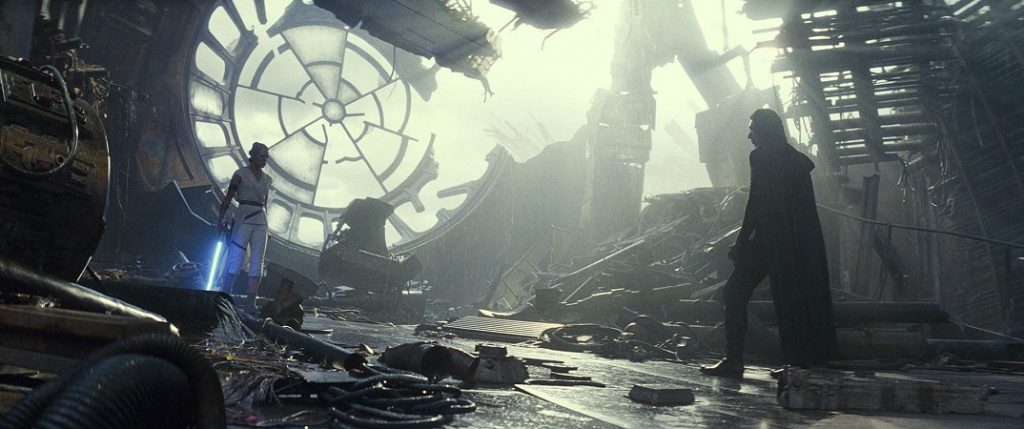
The contrast with The Rise of Skywalker is stark. The opening crawl establishes that Kylo Ren is hunting Palpatine not to join him or learn from him, but to remove an obstacle to his own power. Back from Exegol, he immediately resumes his hunt for the other threat to power: “the scavenger” who continues to elude him. On Mustafar and Exegol, aboard the Steadfast, on Pasaana and Kijimi, throughout he is ruthless and unrelenting. In each conversation with Rey, he shows no wavering in his objective and she expresses no doubts about his intentions – to turn her to the dark side. Inside the wreckage of the same throne room at Kef Bir, Kylo Ren declares that the dark side is “in our nature” and that Rey cannot go back to Leia, just as he cannot. Minutes later dueling amid the crashing waves, neither one says a word about any conflict within him; like Luke on Crait in The Last Jedi, there is no evidence that Rey is seeking to save Ren’s soul. And when she finally has an opening, she does not hesitate to impale him through the torso, a mortal wound visually similar to the blows that killed Han Solo and Qui-Gon Jinn.
And yet the audience is asked to accept that simply sensing his mother in the Force one more time, hearing her call him “Ben” again, and presumably recognizing that her action will lead to her imminent death, is enough to cause Kylo Ren to renounce his dark path and become Ben Solo once more. It would be one thing to build groundwork in the story for the premise that his mother’s unconditional love, even perhaps unreciprocated forgiveness, could reach past the dark barriers in his soul and find the good within. It is another thing entirely to rely on a momentary glimpse of his mother to flip a switch in his heart and bring back Ben. The movie relies entirely on the audience’s nostalgia to connect the dots: portrayed only through a brief reprise of his final conversation with Han, it counts on our investment in the stories of Anakin and Leia to carry the emotional weight of Ben’s epiphany. (This may play a role in why the movie has failed to connect with foreign box offices, like China, who lack established nostalgia for the rest of the saga). It is a failure of storytelling. On its own terms The Rise of Skywalker does nothing to establish that Kylo Ren is conflicted about his ongoing choices in this film or why contact from Leia would create such an abrupt and complete reversal in his intentions.
This is not to say that the intended theme of Kylo Ren’s return to Ben Solo is inherently flawed – but its execution certainly is. Ironically, another Disney movie released four weeks earlier addresses these same themes more overtly and more effectively. In Frozen II, sisters Anna and Elsa learn a terrible truth about their grandfather’s dishonorable deeds; Elsa even sacrifices her life to ensure the truth is known. Grieving her sister, Anna sings the mournful “Next Right Thing” before choosing to accept the consequences of her family’s history: the dam must be demolished and the curse broken, even if that means Arendelle is destroyed in the process. Anna’s selfless willingness to atone for the past ultimately saves the day, for the Northuldra and Arendelle, and for Elsa, too. Frozen II dedicates more time to the singing of Anna’s song than The Rise of Skywalker spends on Kylo Ren’s return to Ben Solo.
As modern mythology, Star Wars conveys important themes, those that are timely as well as those that are timeless. One is: it’s never too late to do the right thing. Another: you must bear responsibility for, and accept the consequences of, your choices. In Return of the Jedi, Anakin Skywalker realizes the first and gives his life to save Luke as the price of the second. In The Rise of Skywalker, Ben Solo’s choices to honor what his mother fought for and to sacrifice himself to save Rey’s life take him down the same path – but without the groundwork and characterization to earn it.

